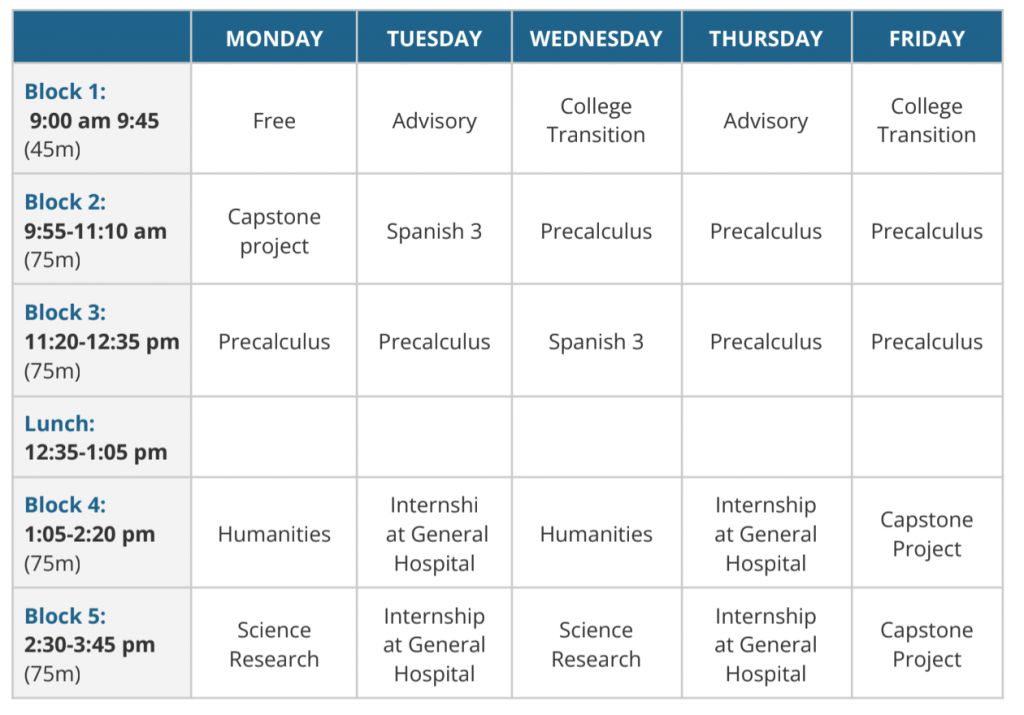Those who don’t know their history are doomed to repeat it…The American high school was designed more than a century ago when people were moving from farms to cities to work in factories. Society needed a literate workforce and high school promised to teach young people skills in an orderly and predictable fashion.
This meant standardizing everything! Based on their grade level, students read the same books and took the same tests at the same pace. They sat in rows, listened to the same lectures, and moved from class to class based on a bell system, which was borrowed from the factory. Even separate subjects – math, science, history, English – had a standardized curriculum based on the idea that future workers needed a minimum of abstract skills and knowledge to become productive.
Unfortunately, most American high schools today still resemble high schools 100 years ago:
- Desks in rows
- Bell schedules
- Textbooks
- Long lectures
- Focus on grades
- Factory-style start times
- Standardized timelines
- Abstracted academic subjects
- Hall passes to go to the bathroom
- Sorting high performers from low performers (tracking)
Traditional US high schools also offer lots of “fun stuff,” like sports, electives (theatre, art, band), and clubs (robotics, leadership, mock trial). Often it’s during these extra classes that students experience the autonomy and passion of going deep into a topic of their choosing. If you think about your own high school experience, you may remember that some of your big educational moments happened outside of the classroom.
In the past century, a lot has changed about our society, including how we live and work. We’ve also learned a lot about how the teenage brain learns. So it makes sense to redesign the American high school for this new historical moment.
Fortunately, many educators have created new solutions to help students thrive in an increasingly complex world. Some of these include:
- Project-based learning Students learn by doing projects rather than just listening to lectures as passive learners. Sometimes called Design for Change, Civic Action Projects, or expos.
- Interdisciplinary blocks Class time with more than one subject taught together, such as computer science and visual design or English and Biology.
- Advisory Students meet with the same faculty member and group of students for the school year (or longer) to track their academic progress and get emotional support.
- Internships Schools help students find internships in the community.
- Capstone projects A single, long-term learning project designed by the student.
- Career pathways A series of classes focusing on a career path, such as biomedical engineering, culinary arts, journalism.
- College transition class This class is called different things at different schools, but generally, it takes students through the process of exploring their passions, researching possible college and careers, and applying to college or postgraduate programs.
Use the blank schedule below to fill in what you think would work well for your high schooler. Since every year is different, we chose just one year to think about — junior year — since that’s when so much learning comes to fruition.
Consider what academic classes your high schooler might need to take to be eligible for the kind of college or career that they’re interested in. For example, if your child wants to pursue sciences, it’s useful to take advanced math. On the other hand, if your child is interested in making things with their hands, they would want to get access to advanced arts or technical design.
Here are two potential high school schedules for two different students, followed by a blank schedule that you can fill in for your child.
Jose wants to be a music engineer/producer and eventually run his own recording studio.

Melody wants to go into the healthcare field with the ultimate goal of being a doctor or nurse practitioner.







